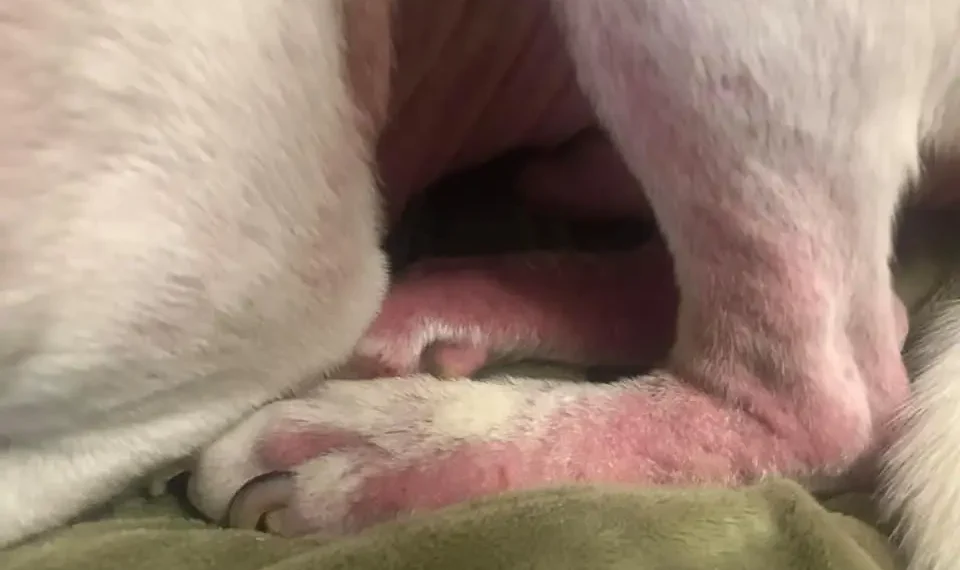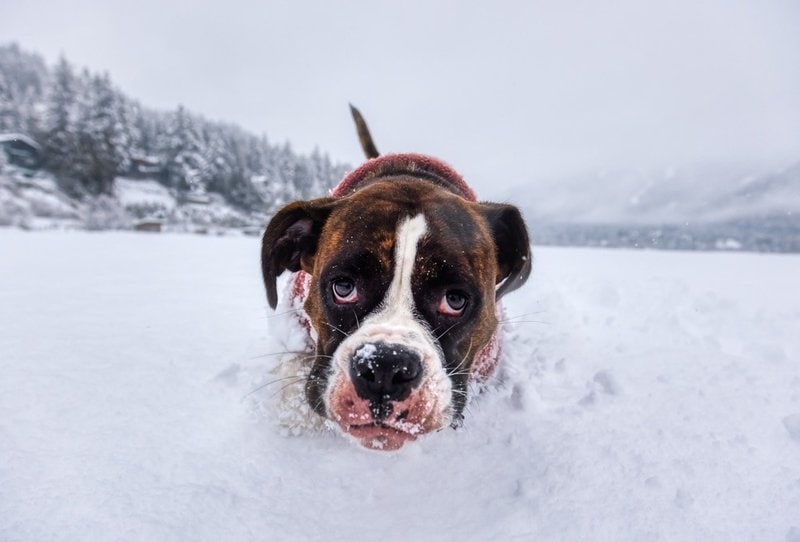Winter is a magical time for many, but for our furry friends, it brings along its own set of challenges. As temperatures plummet, our canine companions face the risk of frostbite. In this article, we’ll delve into the essential ‘Dogs Frostbite Facts‘ to help you understand and protect your four-legged friends during the chilly months.
Unmasking Frostbite: What Happens When Cold Bites?
Before we dive into the details, let’s demystify frostbite. Frostbite occurs when a dog’s skin and tissues freeze due to prolonged exposure to cold temperatures. Imagine your pup’s paws as delicate instruments navigating a frozen landscape; just like our fingers, their extremities are vulnerable to the harsh bite of the cold.
Signs and Symptoms: How to Recognize Frostbite in Dogs?
It’s crucial to be a keen observer of your dog’s behavior during winter outings. Look out for pale or discolored skin, swelling, or a cold touch in areas like the ears, tail, and paws. Dogs can’t verbally communicate discomfort, so it’s up to us to be their advocates against frostbite.
The Importance of Canine Winter Wear: Yes, Dogs Need Coats Too!
We bundle up in winter coats, and our canine companions are no different. Investing in a quality dog coat can provide the necessary insulation to shield your pet from the biting cold. Think of it as their stylish winter armor, protecting them from the elements.
Paws and Claws: Protecting the Extremities
Just like we wear boots to keep our feet warm, dogs benefit from protective gear too. Consider doggy boots to shield their paws from the cold ground and harmful salts used on icy roads. It’s a small investment that goes a long way in ensuring your dog’s comfort and well-being.

Canine Breeds at Higher Risk: Knowing Your Dog’s Vulnerability
Certain dog breeds are more susceptible to frostbite. Short-haired or smaller breeds may feel the cold more intensely, requiring extra care and attention during winter outings. Understanding your dog’s breed-specific needs is essential for effective winter care.
Frostbite Prevention 101: Tips for a Safe Winter Stroll
Prevention is the key to a healthy winter for your dog. Limit outdoor activities in extreme cold, dry your dog thoroughly after walks, and ensure a cozy, warm shelter for them at home. A little precaution goes a long way in safeguarding your furry friend from the icy grip of frostbite.
The Role of Nutrition: Fueling the Internal Heater
Did you know that a well-balanced diet contributes to your dog’s ability to withstand the cold? Ensure your pet’s food is rich in nutrients, as this enhances their overall resilience against the winter chill. It’s like providing them with an internal heater to combat the external cold.
The Healing Touch: Treating Frostbite in Dogs
In unfortunate cases where frostbite occurs, timely and appropriate care is crucial. Gently warm the affected areas, avoid rubbing or massaging, and seek veterinary attention promptly. Swift action can make a significant difference in the recovery process.
Beyond Winter: Long-term Effects of Frostbite on Canine Health
Frostbite can leave lasting effects on your dog’s well-being. Understanding the potential long-term consequences, such as tissue damage or increased vulnerability to cold, emphasizes the importance of proactive winter care. It’s not just about the season; it’s about your dog’s overall health.

The Heartwarming Connection: Strengthening the Bond in Winter
Winter isn’t just a season; it’s an opportunity to strengthen the bond with your dog. Embrace the chilly weather with activities like indoor play, cozy cuddles, and perhaps a warm bowl of homemade dog-friendly soup. Building happy winter memories contributes to a healthy and joyful life for your furry friend.
Conclusion: Navigating Winter with Your Canine Companion
As we wrap up our exploration of ‘Dogs Frostbite Facts,’ remember that your dog relies on you to be their winter guide. Stay vigilant, invest in preventive measures, and cherish the winter moments with your furry companion. Together, you can face the cold with confidence, ensuring a season filled with warmth and wagging tails.
Frequently Asked Questions (FAQs)
- Can all dogs get frostbite? Yes, all dogs are susceptible to frostbite, but certain breeds and sizes may be more vulnerable. It’s essential to be mindful of your dog’s exposure to cold temperatures.
- Are dog boots necessary for every breed? While not mandatory, dog boots benefit all breeds, especially those with shorter hair or smaller sizes. They provide protection against cold surfaces and harsh substances on the ground.
- How quickly does frostbite set in? The onset of frostbite can vary, but in extreme conditions, it can happen within minutes. Keep outdoor activities brief during extremely cold weather to minimize the risk.
- Can frostbite be completely prevented? While complete prevention is challenging, taking proactive measures like limiting outdoor time in extreme cold and providing adequate winter wear significantly reduces the risk of frostbite.
- What’s the best way to warm frozen dog extremities? If you suspect frostbite, gently warm the affected areas using blankets or towels. Avoid hot water or direct heat, and seek veterinary attention promptly for proper care.





















